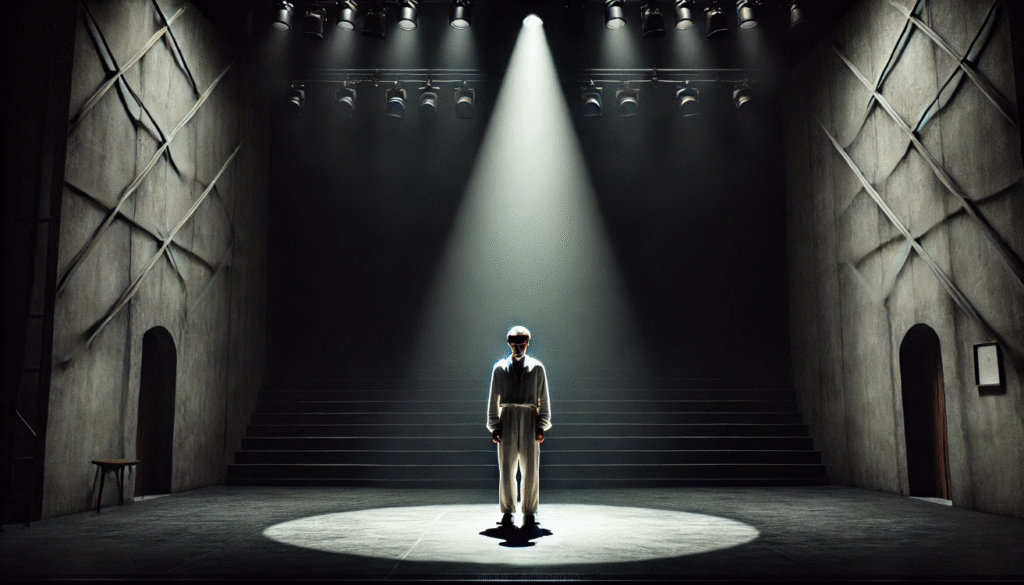Famous Shakespearean soliloquies and their meanings was an English playwright and poet who is widely regarded as one of the greatest writers in the English language. His works, which include plays such as “Hamlet,” “Macbeth,” and “Romeo and Juliet,” have had a profound influence on literature and continue to be studied and performed around the world. Soliloquies, or monologues spoken by a character alone on stage, are a significant feature of Shakespeare’s plays. They allow the audience to gain insight into the character’s thoughts and emotions, and often reveal key themes and conflicts within the play. The purpose of this article is to decode some of Famous Shakespearean soliloquies and their meanings and explore their deeper meanings.
Understanding Soliloquies in Shakespearean Drama:
Famous Shakespearean soliloquies and their meanings is a dramatic device in which a character speaks their thoughts aloud, usually while alone on stage. It is a means of expressing the character’s inner feelings, motivations, and conflicts to the audience. Soliloquies are typically used to provide insight into a character’s psyche and to reveal their true nature. Famous Shakespearean soliloquies and their meanings is different from a monologue in that a monologue is a speech delivered by one character to others on stage, whereas a soliloquy is a character speaking to themselves. An aside, on the other hand, is a brief remark spoken by a character directly to the audience, which the other characters on stage are not supposed to hear.
Famous Shakespearean Soliloquies: A Closer Look:

In Hamlet, the protagonist’s existential dilemma is central to the play’s themes of life, death, and the unknown. Hamlet grapples with the meaning of life and the inevitability of death, as well as the mysteries of the afterlife. His contemplation of these themes drives the narrative and shapes his actions throughout the play. The overarching themes of life, death, and the unknown are essential to understanding Hamlet’s internal struggle and the overall message of the play.
“All the world’s a stage” (As You Like It, Act II, Scene VII)

Jaques’ reflection on the stages of human life offers a profound commentary on the transience of life through the use of symbolism. The universal appeal and philosophical depth of this reflection make it especially thought-provoking, as it prompts us to contemplate the fleeting nature of our existence and the various stages we pass through. This exploration of life’s impermanence serves as a reminder to cherish each moment and appreciate the ever-changing journey of human experience.
“Is this a dagger which I see before me” (Macbeth, Act II, Scene I)

Macbeth’s mental turmoil before King Duncan’s murder is a representation of the intense guilt and moral conflict he is experiencing. His ambition to become king is in direct conflict with his sense of morality, causing deep inner turmoil. This internal struggle highlights the themes of fate and free will in the play, as Macbeth grapples with his own choices and the consequences of his actions. Ultimately, his guilt and ambition drive him to make choices that have far-reaching consequences, demonstrating the complex interplay between fate and free will in the play.
“Now is the winter of our discontent”

Richard’s ambition and manipulation are central themes in the play. His desire for power drives him to manipulate those around him, using deceit and cunning to achieve his goals. This ultimately leads to a lack of self-awareness as he becomes consumed by his own ambition. The foreshadowing of the play’s trajectory is evident in Richard’s early actions and dialogue, as he begins to plot and scheme in order to ascend to the throne. As the play progresses, his manipulation and deceit only escalate, leading to a dramatic and ultimately tragic conclusion. This foreshadowing sets the stage for the unfolding of Richard’s rise and fall, as well as the exploration of themes such as power, deceit, and self-awareness.
“O, she doth teach the torches to burn bright” (Romeo and Juliet, Act I, Scene V)

Romeo’s first sight of Juliet sets the tone for the play’s tragic romance by highlighting the romantic idealism and youthful passion that characterizes their love. Their instant and intense connection foreshadows the tumultuous and ultimately tragic nature of their relationship, as their love is constantly thwarted by external forces. This moment captures the essence of their love story, setting the stage for the heart-wrenching events that unfold in the rest of the play.
Thematic Elements in Shakespearean Soliloquies:

Soliloquies are a powerful literary device that reveal the inner psychology of characters in a dramatic work. Through soliloquies, characters express their innermost thoughts, desires, fears, and conflicts, providing the audience with insight into their motivations and inner turmoil. This allows for a deeper understanding of universal themes such as love, ambition, mortality, and morality. In the context of love, soliloquies may reveal a character’s conflicting emotions, their longing and despair, or their inner turmoil as they grapple with the complexities of romantic relationships. Similarly, soliloquies can shed light on a character’s ambitions, their drive for power or success, and the ethical dilemmas they face as they pursue their goals.
Shakespeare’s Language and Literary Techniques:

Shakespeare’s use of imagery, metaphors, and rhetorical devices in his soliloquies creates an emotional depth and connection with the audience that is unparalleled. Through his language, Shakespeare is able to transport the audience into the innermost thoughts and feelings of his characters, allowing them to truly understand and empathize with their struggles. In his soliloquies, Shakespeare often employs vivid imagery to paint a picture of the character’s emotional state. For example, in Hamlet’s famous “To be, or not to be” soliloquy, he uses the metaphor of sleep to represent death, and the “sea of troubles” to convey the overwhelming nature of life’s challenges.
The Dramatic Function of Soliloquies:
Soliloquies are a powerful narrative tool used in literature and drama to provide exposition and foreshadowing. By allowing a character to speak their thoughts aloud, soliloquies engage the audience and break the fourth wall, creating a sense of intimacy and connection between the character and the viewers or readers. This technique not only provides insight into a character’s innermost thoughts and feelings, but also allows for the delivery of important information that may not be easily conveyed through dialogue alone. Furthermore, soliloquies contribute to character development by revealing the motivations, desires, and conflicts within a character’s mind. Through these introspective moments, the audience gains a deeper understanding of the character’s complexities and can empathize with their struggles.
Modern Interpretations of Shakespearean Soliloquies:

In modern theater and cinema, soliloquies are often adapted to fit the narrative and style of the production. They may be presented as inner monologues, voiceovers, or even direct addresses to the audience. In film, soliloquies can be incorporated through voiceover or as intimate, reflective moments for the character. Shakespeare’s soliloquies continue to be relevant in contemporary contexts due to their exploration of universal themes such as love, power, and morality. They offer insight into the human experience and can be adapted to resonate with modern audiences. The cultural and academic significance of Shakespeare’s soliloquies today lies in their enduring impact on literature, theater, and film.
Shakespearean soliloquies are an essential aspect of his plays, offering deep insights into the characters’ inner thoughts and emotions. They serve to engage the audience and provide a more profound understanding of the characters and the themes of the play. Soliloquies also help to create dramatic tension and advance the plot. The impact of Shakespearean soliloquies is far-reaching, as they have influenced countless playwrights and writers over the centuries. Their timeless appeal lies in their ability to resonate with audiences of all backgrounds and cultures. The universal themes of love, power, jealousy, and ambition explored in these soliloquies continue to be relevant to modern audiences.














